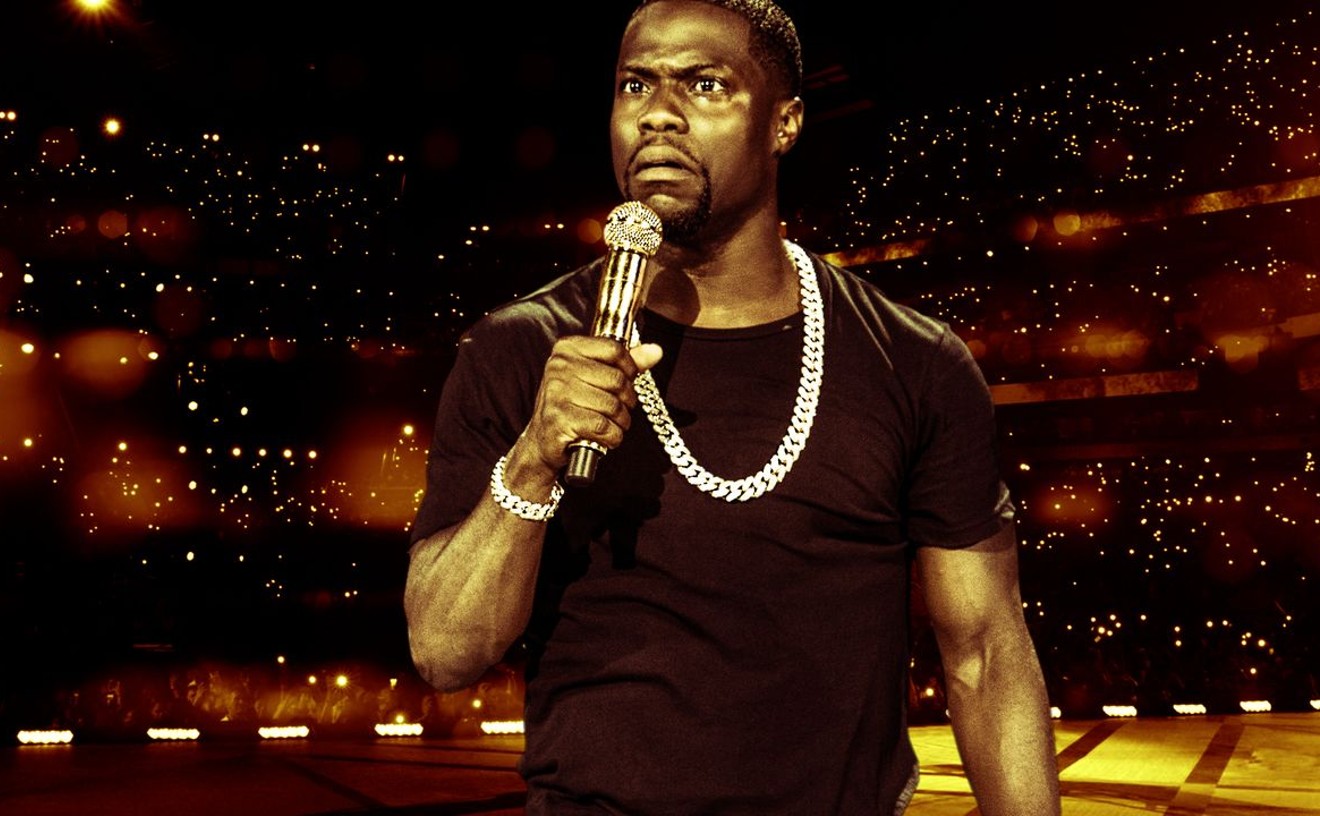Nowhere has this change in curatorial attitude been more emphatically demonstrated than at the William Havu Gallery. At the end of the summer, gallery director Bill Havu put on a weird presentation of figure studies that was anchored -- and by that I mean weighted down -- by a group of hideously ugly James McElhinney paintings. Thank goodness Havu has taken an entirely different approach for the current offering, Amy Metier & Bethany Kriegsman, by doing something that's actually good.
The show puts together two respected Colorado artists, so Havu couldn't have gone too far wrong. Metier and Kriegsman were each given separate sections of the grand main space, but their pieces are displayed side by side in the cozy room under the mezzanine. The two have distinctive styles, and you could hardly mistake the efforts of one for the other; nonetheless, their approaches are very compatible because they have more than a few aesthetic interests in common, including a profound appreciation for retro abstraction in the classic modernist mold.
Metier is up first, and as visitors enter the gallery, they are immediately engulfed in her sumptuous abstract paintings. Straight ahead is the striking "Shiva," an oil on canvas that on one level is nothing more than a balanced juxtaposition of cold and hot tones. From another vantage point, however, it's a blending of representation with abstraction, a technique Metier has used for more than a decade. In order to create these works, she starts with a still life or a landscape and then pushes until it's unrecognizable. Thus the paintings may evoke the familiar shapes Metier started with, but she never illustrates them.
"Shiva" is one of a group of related abstracts that hang in the entry space and in the nooks and crannies surrounding it. Other noteworthy paintings include "Fountain," hung to the right of the entrance, and the enormous "Vernissage."
Arriving at abstraction through representation is hardly a new idea. It's the same one that was used by Picasso and the other great modern masters of the early- to mid-twentieth century. A good deal of abstract painting can trace its lineage back to Picasso, and Metier, in particular, has been influenced by his example.
Kriegsman, whose paintings are installed in the window space and at the bottom of the stairs, also refers to old-modern in her works, particularly to the surrealism and abstract expressionism of Joan Miró. Kriegsman uses plants as starting points, and for the oil on canvas "Summer Garden," which is visible from the sidewalk, she creates shapes based on flowers clustered into a dense, blue atmospheric arrangement surrounded by a sea of roughly rectangular shapes. The crescent-shaped petals of the flowers have an astounding regularity, which Kriegsman achieved with stencils.
Without in any way diminishing the Miró-esque elements of the Kriegsmans, especially when it's undeniable in pieces such as "Sexy Garden" and "Land Between the Rivers," there's also a whiff of Judy Pfaff. "Summer Garden" is reminiscent of the many Pfaffs that were shown at Robischon last season.
Metier & Kriegsman is a wonderful exhibit; it's apparent that both artists had a lot of fun flinging around copious amounts of boldly colored paint. It's definitely an appealing presentation to take in, as I knew it would be. When I went to see the exhibit last week, the whole place felt so fresh, it was as though it had been aired out -- something Bill Havu really needed to do after that McElhinney stink bomb of a summer show. The gallery's radical shift in quality of offerings from one month to the next makes a good point about the nature of the art world in general: A gallery is, first and foremost, nothing other than a big, empty store.
The dimmer-switch analogy doesn't quite work in the case of the Robischon Gallery, because, symbolically anyway, the lights are always at their maximum brightness. The last show of the summer -- the least-important slot on the exhibition calendar, by the way -- is a case in point: It highlighted up-and-coming Colorado artist Stefan Kleinschuster, whose contemporary figural paintings are simultaneously crisply focused and expressionistically painted. It's hard to image how he was able to master this unlikely combination of skills, but, undeniably, he did. You don't have to trust me on it, because you can still check out Kleinschuster's paintings in Robischon's Viewing Room, where an abbreviated version of the August show is still on display.
Back up front, in the main part of the gallery, you'll find Robischon's big fall entries. In the pair of rooms on either side of the entrance is Scott Chamberlin, a solo dedicated to the influential Colorado ceramics artist. In the spaces beyond is Gary Komarin; it's the New York painter's Denver premiere.
The new Chamberlin sculptures are an obvious outgrowth of the work he's been doing for more than a decade. In the early '90s, he did large installations in which handfuls of ceramic forms sat together on the floor. These were followed in the late '90s by wall-hung sculptures, which were created from assemblages of individually formed organic elements attached while the clay was wet.
This new group of sculptures at Robischon seems to pull inspiration from both types of the artist's earlier work, with separate elements arranged together as a single piece and then hung on the wall, not the floor. Chamberlin puts the clay parts on metal rods mounted perpendicular to the wall, which allows the ceramic pieces to stand out with a greater sense of three-dimensionality rather than hanging flat like paintings. The shapes that Chamberlin creates suggest natural things, including twigs, drops of water and animal heads. The references to nature are also seen in his gorgeous glazes. Each segment on each sculpture is glazed the same way, using deep, luxurious earth tones. The firing, which seems to have curdled some of the glazes, produces an effect not unlike the famous matte vellum finishes of the American art-pottery movement of a hundred years ago.
A number of these recent Chamberlins recall the look of antique European wall fountains, which are typically made of tin-glazed ceramics with a reservoir mounted above a bowl. A good example of this is "dryppe," an orb sitting above a basin, with a teardrop shape mounted below.
This reference to European decorative art is no coincidence. Earlier this year, Chamberlin went on a study trip to Europe; his busman's holiday was funded by a grant from the Pollock-Krasner Foundation. He spent half a year in Portugal studying the formal gardens, but he also took time to work in clay. The series of pieces he produced inspired the sculptures at Robischon, which he created in his Denver studio.
Chamberlin has written that although he makes references to things in the real world, his works do not directly relate to his sources in nature. He may use parts of the human body, for instance, but he does not intend for them to evoke the figure. Instead, he does abstractions that are purposefully ambiguous, or, as he would have it, "odd and elegant" and "strange and seductive."
Odd, elegant, strange and seductive are also good descriptions of the compelling abstract paintings by Komarin that are installed in the center of Robischon. Before I knew anything about Komarin, I immediately noticed how his paintings are related to Philip Guston's pioneering work of the 1960s and '70s. The source of this effect is no conundrum, though, since Komarin was a protegé of Guston's at Boston University.
Komarin's works are painterly, with lots of drips, runs, smears and scumbled passages that result in stunning surfaces. On top of the painted and blended ground, Komarin draws with pigment and what looks like oil crayons. The drawings are intentionally crude and childlike, but their simplicity translates into boldness -- a particularly Gustonian touch.
Guston, who died in 1980, was the main mentor of the entire neo-expressionist generation of the '80s and '90s, and Komarin's paintings can be broadly grouped together with that movement, which is now history. However, Komarin's paintings still have a contemporary feel, probably because they're only marginally representational. I think the large, beautiful paintings are just fabulous, enveloping viewers and pulling them into Komarin's majestic vision.
The two shows at Robischon, Scott Chamberlin and Gary Komarin, not to mention the Stefan Kleinschuster reprise in the back, make for some mighty good art viewing. And surely, anyone can tell that Robischon is starting the new season in the same way it ended the last: with the lights turned up to the max.










